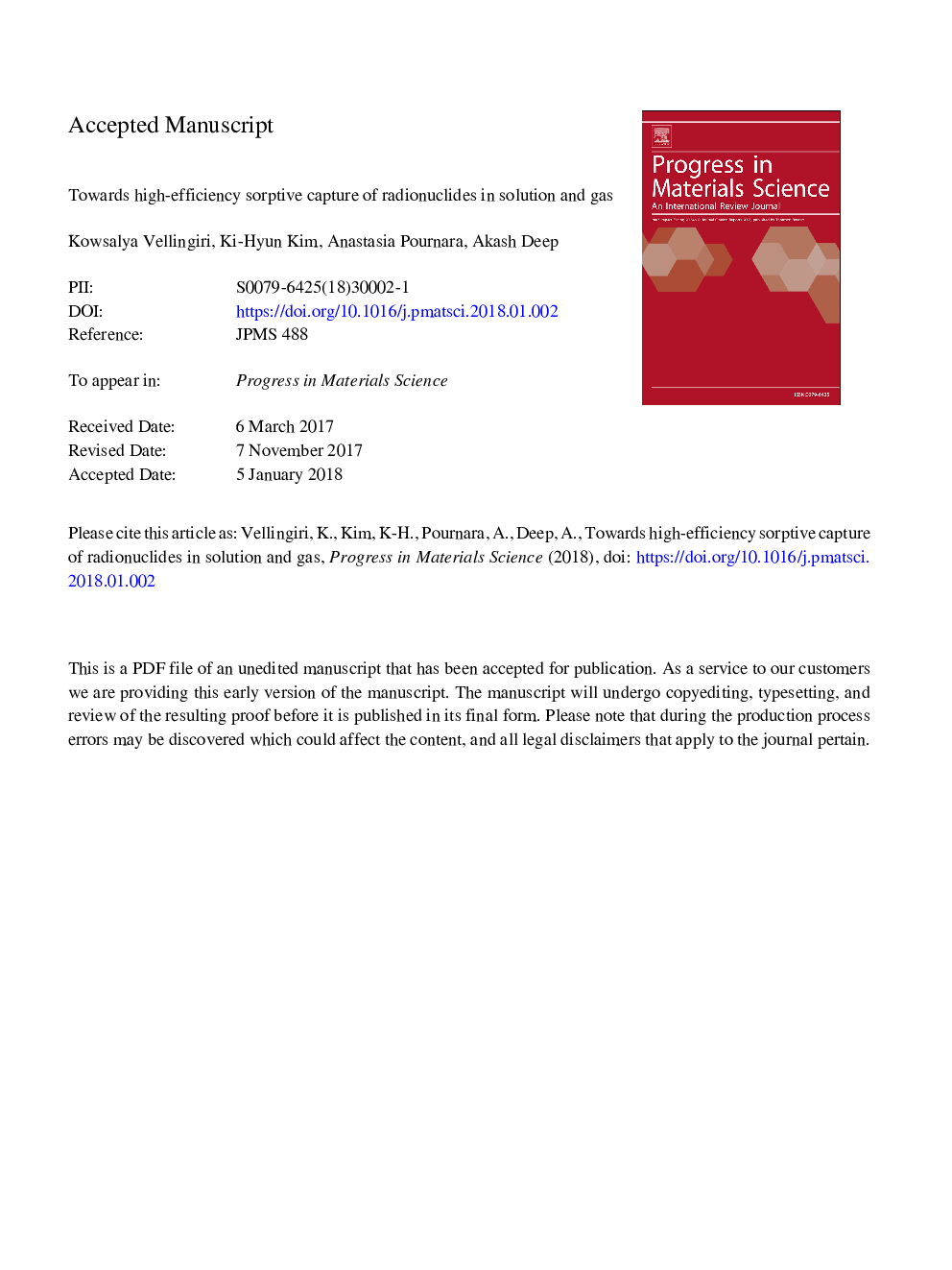| Article ID | Journal | Published Year | Pages | File Type |
|---|---|---|---|---|
| 8023050 | Progress in Materials Science | 2018 | 174 Pages |
Abstract
As globalization and rapid population growth have raised global energy needs, the demand for nuclear energy has increased drastically. To make use of such energy more reliably, the efficient disposal of nuclear wastes has become a major challenge. With this in mind, numerous research efforts have been put to safely store, capture, and immobilize radioactive waste. As a result, a variety of sorbent materials with different physical, chemical, and structural properties have been invented or discovered. The maximum removal capacity of these sorbents were then assessed for a variety of radionuclides in soluble and/or gaseous forms. The pre-/post-synthetic modification of these sorbent materials has also been investigated intensively to help enhance their overall stability, tunability, and capacity without altering or damaging the main framework. In this review, we explored the performance of different materials for the sorption of most important radionuclide species including uranium, cobalt, europium, iodine, cesium, strontium, technetium, krypton, xenon, and argon. To begin with, we classified sorbent materials into three categories in light of their structural evolvement over time. We also described the critical factors to consider for the proper application of these categorized sorbents (e.g., sorption properties, structural characteristics, reversibility, and renewability). Finally, we discussed briefly the present limitations and future prospects of these technologies.
Keywords
EDXRFACFAOMETsCTPAMPsDGADIWDPPAΔG°ΔH°C16TABoctadecyltrimethylammonium bromideBPEAPyCarboxymethylchitosanDiglycolamideΔS°AZPAqueous Biphasic Extraction ChromatographyAlPOCSPsdl-Lactic acidDETACNWsBTECDTACNTSEDSC-S-HDVBBDCADCEXAFSDBD1,4-BenzenedicarboxylateAgNPsCStDFTDNAdeionized waterAluminophosphateAminopyridineDifferential Thermal AnalysisEnthalpyEntropyEthanediamineEnergy Dispersive X-ray SpectroscopyEnergy dispersive X-ray fluorescenceGibbs free energyNuclear energyBinding energyUraniumdodecyltrimethylammonium bromideDiethylenetriaminedivinylbenzeneradionuclideCoal-tar pitchCyclodextrinSorbentsDecontamination factorSilver nanoparticlesCarbon nanowiresCarbon nanotubesDensity functional theoryCHAHexadecyltrimethylammonium bromideCalcium silicate hydrateActivated carbon
Related Topics
Physical Sciences and Engineering
Materials Science
Nanotechnology
Authors
Kowsalya Vellingiri, Ki-Hyun Kim, Anastasia Pournara, Akash Deep,
